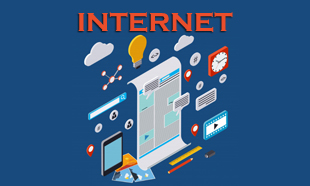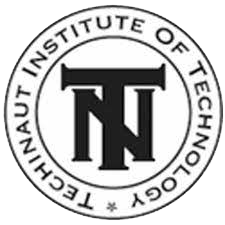0
Dive into the world of the internet with our comprehensive course at KS Computer Institute, VPO Dorangla, Gurdaspur, Punjab. Learn essential skills for safe browsing, communication, and online collaboration. Join us to navigate the digital landscape confidently!
INTERNET
In the digital age, proficiency in navigating the Internet is essential for individuals seeking to stay connected, informed, and productive. "KS Computer Institute," a "Techinaut Institute of Technology" franchise in VPO Dorangla, Gurdaspur, Punjab, offers a six-month Internet course. This program aims to equip students with the skills and knowledge necessary to leverage the power of the Internet for communication, information retrieval, entertainment, and productivity. This article provides a detailed overview of the course curriculum, covering topics ranging from internet basics to advanced online activities and security measures.
THE OBJECTIVE OF THE COURSE:
The primary objective of the Internet course at KS Computer Institute is to empower students with practical skills and theoretical knowledge to utilize the Internet effectively and responsibly. By the end of the course, students will be able to:
- Understand the fundamental concepts and functionalities of the Internet.
- Navigate the web confidently, conduct searches, and find relevant information.
- Communicate effectively through e-mail, chat, and other online platforms.
- Utilize online resources for entertainment, shopping, banking, and other activities.
- Develop basic web development skills and create personal web content.
- Recognize and mitigate online security risks, including viruses, spam, and phishing attacks.
COURSE OVERVIEW:
PART I: WELCOME TO THE INTERNET
SECTION 1: WHAT'S SO GREAT ABOUT THE INTERNET, ANYWAY?This section introduces students to the significance and benefits of the Internet in modern society. Students learn about the Internet's role in communication, information dissemination, entertainment, e-commerce, and social networking. They explore real-world examples of how the Internet has revolutionized various industries and transformed everyday life.
SECTION 2: IS THE INTERNET SAFE? VIRUSES, SPYWARE, SPAM, AND OTHER YUCKY STUFFIn this section, students examine internet usage's potential risks and threats, including viruses, spyware, malware, spam, and phishing attacks. They also learn about common security vulnerabilities and best practices for protecting their devices and personal information online.
SECTION 3: KIDS AND THE NETStudents explore the challenges and considerations related to children's internet usage, including online safety, parental controls, age-appropriate content, and digital citizenship. They learn about resources and tools available to parents and educators to promote safe and responsible internet usage among children.
PART II: INTERNET, HERE I COME!
SECTION 4: ASSEMBLING YOUR GEAR AND CLIMBING ON THE NETThis section covers the hardware and software requirements for accessing the Internet on computers, smartphones, tablets, and Other Devices. Students learn how to set up and configure their devices for Internet connectivity.
SECTION 5: CONNECTING WITH WI-FI, LAPTOPS, AND SMARTPHONESStudents learn about different methods of internet connectivity, including Wi-Fi, Ethernet, and mobile data. They explore how to connect their devices to wireless networks and troubleshoot common connectivity issues. Additionally, students learn about internet usage on laptops and smartphones, including data usage management and mobile browsing tips.
PART III: WEB MANIA
SECTION 6: WELCOME TO THE WILD, WONDERFUL, WACKY WEBIn this section, students explore the vast and diverse World Wide Web and learn about different types of websites, including informational sites, social media platforms, online forums, blogs, e-commerce sites, and multimedia streaming platforms.
SECTION 7: TAKE YOUR BROWSER FOR A SPINStudents receive training in using internet browsers effectively for web navigation and exploration. They learn about popular browsers such as Google Chrome, Mozilla Firefox, and Microsoft Edge, as well as browser features and customization options.
SECTION 8: NEEDLES AND HAYSTACKS: FINDING ALMOST ANYTHING ON THE WEBThis section covers effective search strategies and techniques for finding information on the web. Students learn about search engines, search operators, advanced search filters, and evaluating search results for relevance and credibility.
SECTION 9: MUSIC AND VIDEO ON THE WEBStudents explore the diverse range of music and video content available on the Internet, including streaming services, online radio stations, music videos, and movie platforms. They learn to discover, access, and enjoy multimedia content safely and legally.
SECTION 10: MORE SHOPPING, LESS DROPPINGThis section introduces students to the world of online shopping and e-commerce. They learn about popular e-commerce platforms, payment methods, product search and comparison tools, online reviews, and security considerations for online transactions.
SECTION 11: BANKING, BILL PAYING, AND INVESTING ONLINEStudents learn about the convenience and security of managing financial transactions online, including banking, bill payment, and investment activities. They explore online banking platforms, electronic payment methods, budgeting tools, and investment platforms.
SECTION 12: SWIPING FILES FROM THE NETIn this section, students learn about file sharing and downloading on the Internet. They explore legal and ethical considerations for downloading files, avoiding copyright infringement, and protecting against malware and phishing scams associated with file-sharing networks.
PART IV: E-MAIL, CHAT, AND OTHER WAYS TO HANG OUT ONLINE
SECTION 13: IT'S IN THE MAIL: SENDING AND RECEIVING E-MAILStudents receive training in using e-mail effectively for communication purposes. They learn about e-mail etiquette, composing and sending e-mails, managing e-mail folders, organizing contacts, and attaching files to e-mails.
SECTION 14: KEEPING YOUR MAIL SAFE FROM VIRUSES, SPAM, AND WI-FI SNOOPSThis section covers best practices for maintaining e-mail security and privacy. Students learn about antivirus software, spam filters, e-mail encryption, and secure e-mail protocols to protect their e-mail accounts and messages from cyber threats.
SECTION 15: PUTTING YOUR MAIL IN ITS PLACEStudents learn about e-mail organization and management techniques for efficiently handling incoming and outgoing messages. They explore strategies for organizing e-mail folders, creating filters and rules, and prioritizing e-mails based on importance and urgency.
SECTION 16: TYPING AND TALKING ON THE NETThis section covers online communication methods beyond e-mail, including instant messaging, chat rooms, and voice and video calls. Students learn about popular messaging platforms, etiquette for online conversations, and tips for effective communication in virtual environments.
SECTION 17: GAMES AND WORLDS ON THE WEBStudents explore the world of online gaming and virtual worlds. They learn about different types of online games, gaming platforms, multiplayer environments, and virtual communities. They also learn about online gaming safety and moderation.
PART V: PUTTING YOUR STUFF ON THE NET
SECTION 18: MAKING A SPLASH ONLINEStudents learn about creating and sharing content on the Internet. They explore different types of online content, including text, images, videos, and multimedia presentations. They also learn about content creation tools, platforms for sharing user-generated content, and strategies for building an online presence.
SECTION 19: BLOGS AND TWITTERThis section covers blogging and microblogging platforms for expressing ideas, sharing opinions, and engaging with online communities. Students learn about creating and managing blogs, writing effective blog posts, and building a following on social media platforms like Twitter.
SECTION 20: MAKING YOUR WEB SITEStudents receive training in web development and learn how to create and publish their websites. They explore web design principles, HTML coding, website hosting, domain registration, and website management tools. They also learn about website security and optimization techniques.
PART VI: THE PART OF TENS
SECTION 21: TEN PROBLEMS AND TEN SOLUTIONSStudents learn about common internet-related problems and challenges like slow internet speed, browser crashes, and online security threats. They explore troubleshooting techniques and solutions for effectively resolving these issues.
SECTION 22: TEN FUN OR WORTHWHILE THINGS YOU CAN DO ONLINEIn this section, students discover ten enjoyable and productive activities they can engage in online, such as learning new skills through online courses, participating in virtual events and workshops, exploring virtual museums and art galleries, and connecting with like-minded individuals in online communities.
CONCLUSION:
The Internet course at KS Computer Institute offers a comprehensive curriculum to equip students with the skills and knowledge necessary to navigate the Internet confidently and responsibly. By covering a wide range of topics, from Internet basics to advanced online activities and security measures, the course prepares students to harness the power of the Internet for communication, information retrieval, entertainment, and productivity. Graduates emerge with the ability to navigate the cyberverse effectively, utilize online resources for personal and professional purposes, and safeguard themselves against online threats. With these skills, students can thrive in today's digital world.
 


